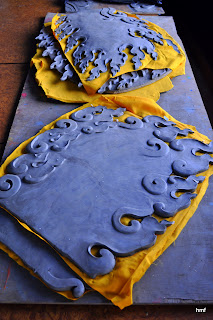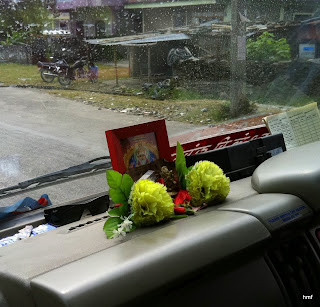Ngawang Rigzin as Challenger
On this glorious late afternoon and every late afternoon, the monks meet outside and practice Tibetan Debate. It is loud, energetic and fierce in appearance. The following is from a paper written by Ngawang Rinchen explaining debate.
The one who asks the questions and (the) one who gives the answer are called challenger and promise keeper respectively. Before they start the debate they make an offering of praise to the great logician Mahapandita to show their respect. Thus starts the debate.
There are four answers that the promise keeper should give which are 1) I agree 2) Why 3) Wrong reason 4) Unsure reason
1) "I agree" is used when you accept the question, eg: let the topic be pot, it is a concrete body because it is a visible...then you give the answer "I agree"
2) "Why" is given when the questioner wants to know why it is that
3) "Wrong reason" is answered when the wrong reason is put to support the original statement
4) "Unsure Reason" is given when the reason is too broad
Ngawang Tsultrim as Challenger
Leskshey Tenpa as Promise Keeper
In their understanding of the gesture, the right hand represents method, meaning especially the practice of compassion, and the left hand represents wisdom. Bringing the two hands together represents the joining of wisdom and method. At the moment of the clap, you hear the left foot stomp down and that represents slamming shut the door to rebirth in the lower levels. After the simultaneous clap and stomp, the Challenger holds out the left arm of wisdom to keep shut the door to all rebirth. Also, in that gesture, the Challenger uses his right hand to raise up his prayer beads around his left arm. This represents the fulfillment of the efforts of compassion, in lifting up all suffering beings out of the round of rebirth. http://asiasociety.org/countries/traditions/tibetan-buddhist-debate
Jampa Dhakpa Raising up His Prayer Beads
For a better understanding of the dynamics of Tibetan Debate check out the following:
For a better understanding of the dynamics of Tibetan Debate check out the following:




















































